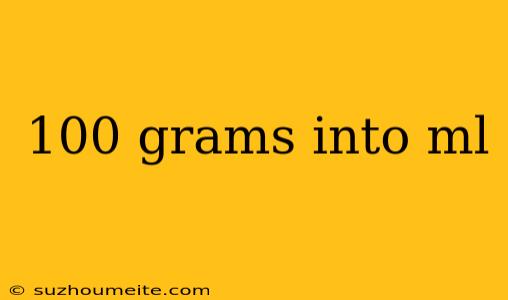100 Grams into ML: A Conversion Guide
When working with recipes, chemistry, or other scientific applications, it's often necessary to convert between units of measurement. One common conversion is from grams (g) to milliliters (mL). In this article, we'll explore how to convert 100 grams into milliliters.
What is the Density of the Substance?
The key to converting grams to milliliters is understanding the density of the substance. Density is defined as the mass of a substance per unit volume. In other words, it's the amount of mass per unit of volume.
Different substances have different densities. For example:
- Water has a density of approximately 1 gram per milliliter (g/mL)
- Sugar has a density of approximately 1.6 g/mL
- Flour has a density of approximately 0.6 g/mL
Converting 100 Grams to Milliliters
To convert 100 grams to milliliters, you need to know the density of the substance. Let's use water as an example.
Water: 100 g ÷ 1 g/mL = 100 mL
Sugar: 100 g ÷ 1.6 g/mL = 62.5 mL
Flour: 100 g ÷ 0.6 g/mL = 166.7 mL
As you can see, the same amount of mass (100 grams) corresponds to different volumes depending on the substance.
Other Conversion Factors
Here are some other common conversion factors:
- Honey: 1.4 g/mL
- Milk: 1.03 g/mL
- Vegetable Oil: 0.92 g/mL
Keep in mind that these conversion factors are approximate and may vary depending on the specific type or brand of the substance.
Conclusion
Converting 100 grams to milliliters requires knowing the density of the substance. With this knowledge, you can easily convert between units and achieve accurate results in your recipe or scientific application. Remember to use the correct conversion factor for the specific substance you're working with.
